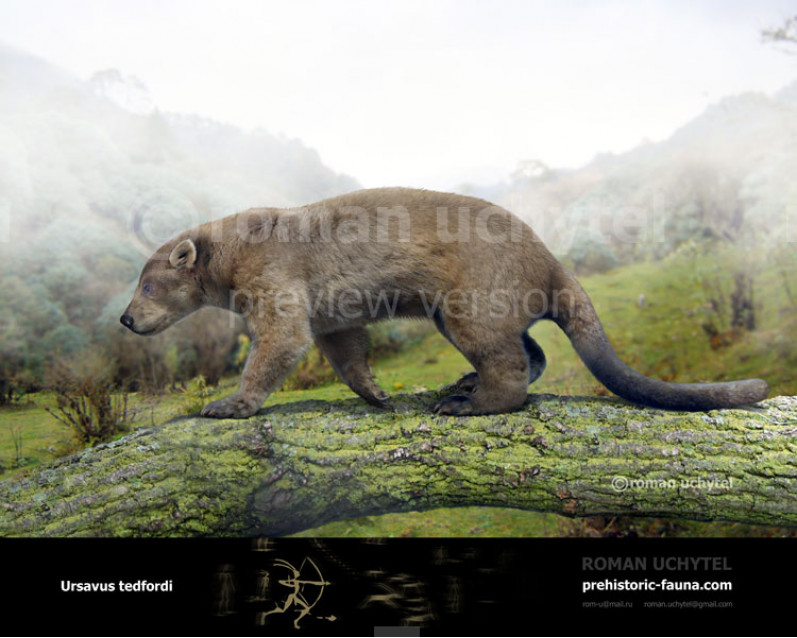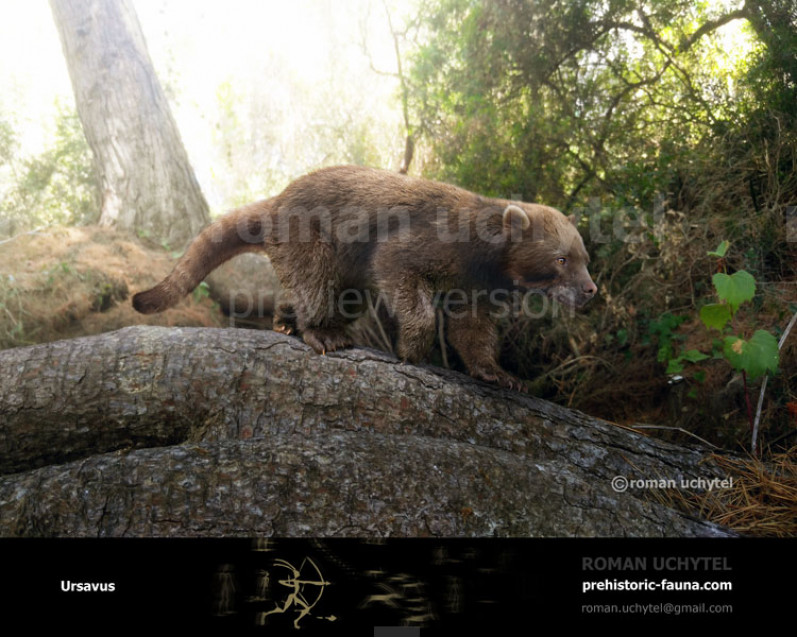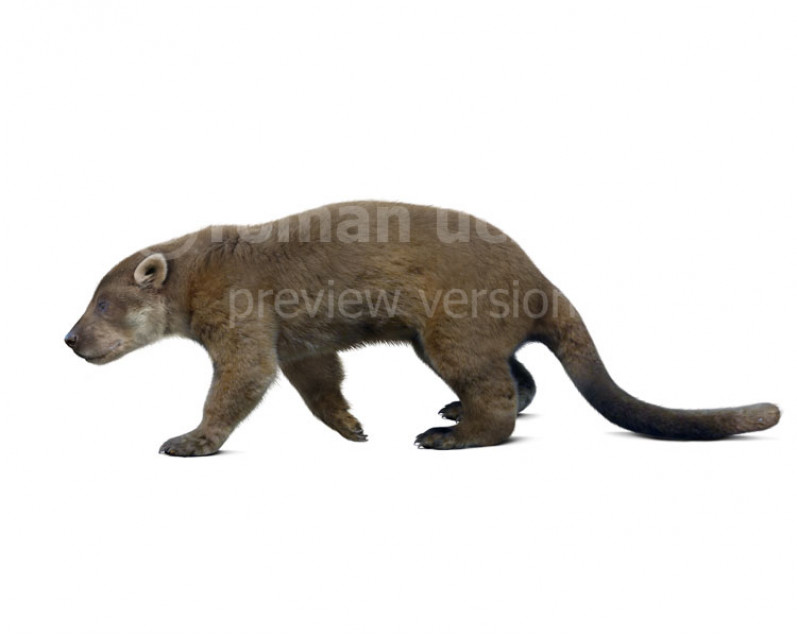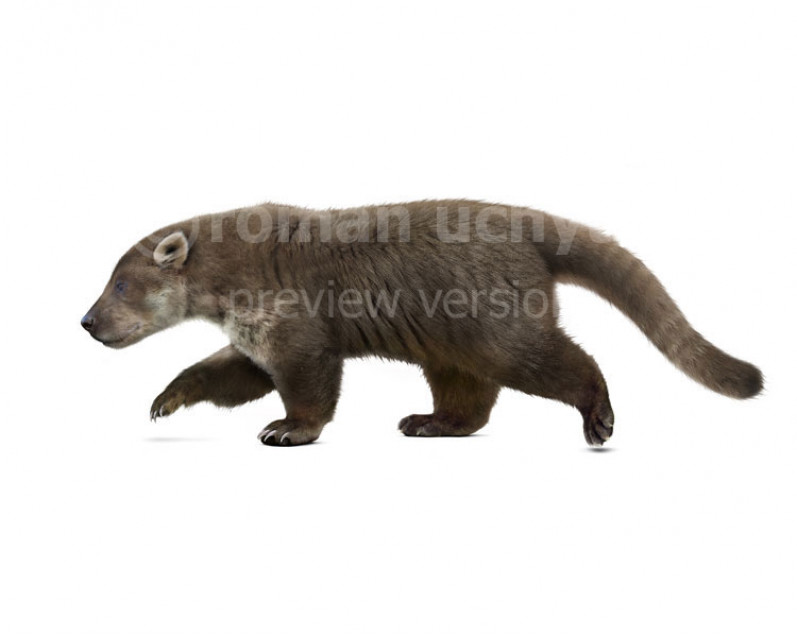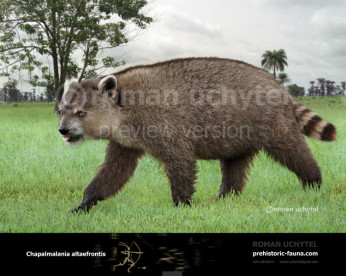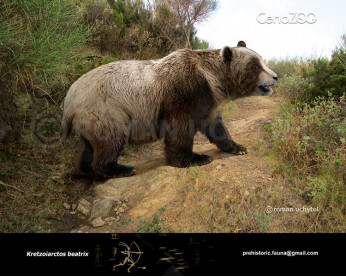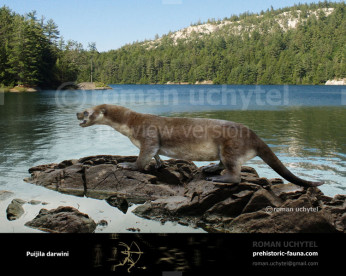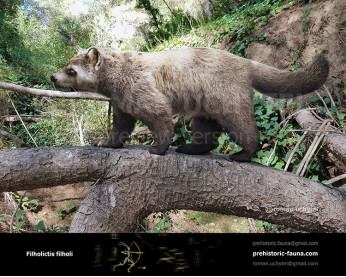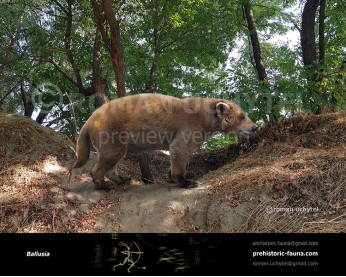Ursavus
260260Ursavus (Ursavus Schlosser 1899)
Order: Carnivora
Suborder: Caniformia
Superfamily: Arctoidea
Family: Ursidae
Size: 1.3 m in length, 55 cm in height, 60 kg of weight
Time period: the Miocene of North America, Europe, and Asia (~23—5.3 Ma)
Type species: Ursavus brevirhinus
Ursavus is an extinct genus of ursid carnivoran mammals that existed in North America, Europe, and Asia during the Miocene, living from ~23—5.3 Ma, existing for approximately 17.7 million years. It evolved from the bear-dog. The genus apparently dispersed from Asia into North America about 20 Ma, becoming the earliest member of the subfamily Ursinae in the New World. Qiu points out that if a questionable 29 million-year-old specimen of Ursavus reported in North America is validated, Ursavus may have evolved in North America and dispersed westward into Asia. The higher number of fossils in Europe grading toward eastern Asia make the westward dispersal unlikely.
Ursavus was named by Schlosser (1899). It was assigned to Ursidae by Schlosser (1899) and R. L. Carroll (1988); and to Ursavini by R.M. Hunt (1998) and Jin et al. (2007). In life, the various species would have been between cat-sized for the smaller species, and wolf-sized for the larger members of the genus and were mainly ground-dwelling omnivores or hypocarnivores.
U. elmensis, also known as the "dawn bear" is generally taken to be the earliest undisputed bear species.
Currently, only U. orientalis, from the Shanwang diatomite of Early Miocene China, is known from a complete skeleton.However, U. orientalis may have been reassigned to the genus Ballusia and is thus no longer considered part of Ursavus.
Most other species are known from teeth and skull fragments. A complete skull has been found in the Gansu region of China of a new species dubbed U. tedfordi. From the late Miocene, it was about the size of a wolf and is believed to be nearest ancestor of most modern bear species apart from the Giant Panda and Spectacled Bear.
From Wikipedia, the free encyclopedia
Ursavus (Ursavus Schlosser 1899)
Order: Carnivora
Suborder: Caniformia
Superfamily: Arctoidea
Family: Ursidae
Size: 1.3 m in length, 55 cm in height, 60 kg of weight
Time period: the Miocene of North America, Europe, and Asia (~23—5.3 Ma)
Type species: Ursavus brevirhinus
Ursavus is an extinct genus of ursid carnivoran mammals that existed in North America, Europe, and Asia during the Miocene, living from ~23—5.3 Ma, existing for approximately 17.7 million years. It evolved from the bear-dog. The genus apparently dispersed from Asia into North America about 20 Ma, becoming the earliest member of the subfamily Ursinae in the New World. Qiu points out that if a questionable 29 million-year-old specimen of Ursavus reported in North America is validated, Ursavus may have evolved in North America and dispersed westward into Asia. The higher number of fossils in Europe grading toward eastern Asia make the westward dispersal unlikely.
Ursavus was named by Schlosser (1899). It was assigned to Ursidae by Schlosser (1899) and R. L. Carroll (1988); and to Ursavini by R.M. Hunt (1998) and Jin et al. (2007). In life, the various species would have been between cat-sized for the smaller species, and wolf-sized for the larger members of the genus and were mainly ground-dwelling omnivores or hypocarnivores.
U. elmensis, also known as the "dawn bear" is generally taken to be the earliest undisputed bear species.
Currently, only U. orientalis, from the Shanwang diatomite of Early Miocene China, is known from a complete skeleton.However, U. orientalis may have been reassigned to the genus Ballusia and is thus no longer considered part of Ursavus.
Most other species are known from teeth and skull fragments. A complete skull has been found in the Gansu region of China of a new species dubbed U. tedfordi. From the late Miocene, it was about the size of a wolf and is believed to be nearest ancestor of most modern bear species apart from the Giant Panda and Spectacled Bear.
From Wikipedia, the free encyclopedia

